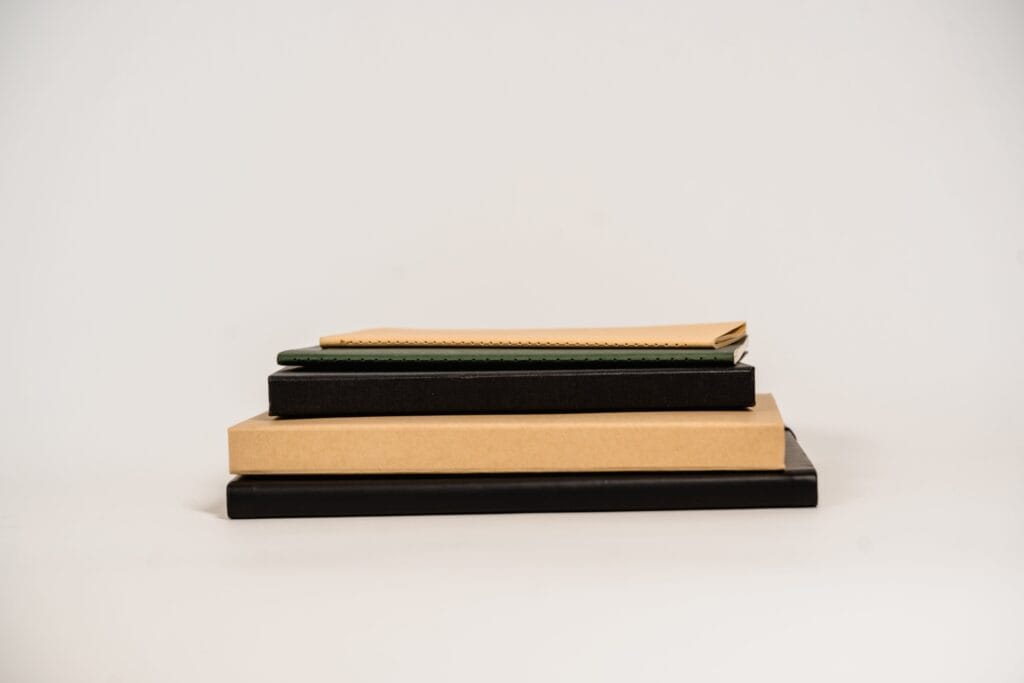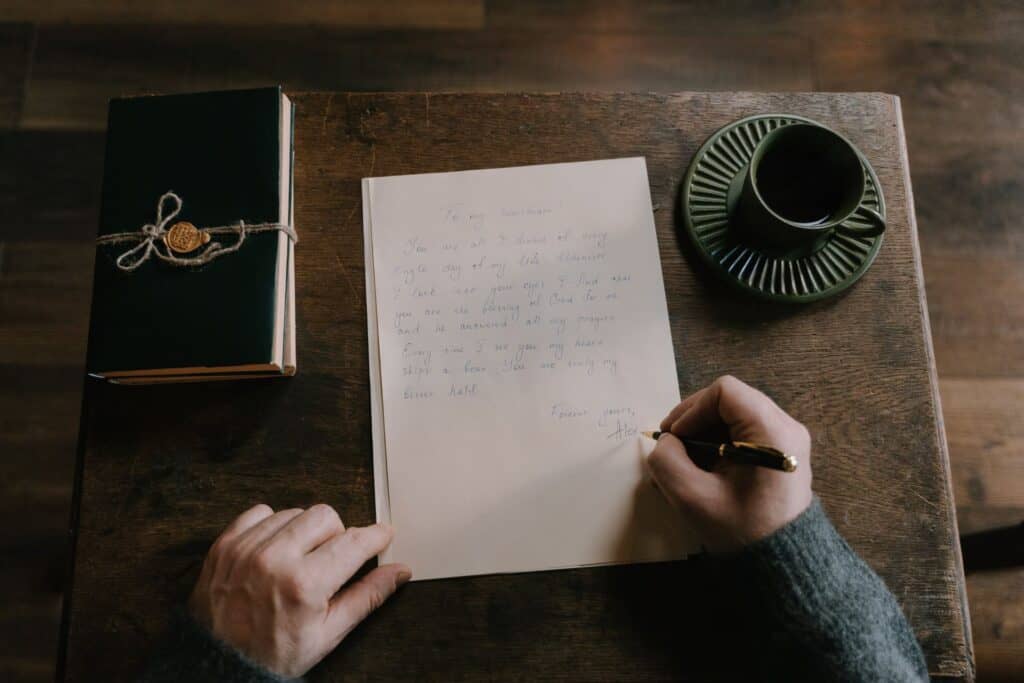So, you finally decided to start journaling? That’s fantastic! Journaling is an impactful habit that can enhance your self-awareness and provide a tangible record of your life. But where do you start?
Don’t worry. This part is also where I always got stuck in my journalling journey. The start is always the hardest because there’s just so much friction when trying out something new. You have to figure out what journal to use, how to do it, and how often you can do it.
I’ve experienced this firsthand after trying different journaling types and styles until I found the one for me. Every new style I tried meant starting again. And every time, I figured out a better way to do it.
Here’s a guide on how to start journaling in seven simple steps to get you going.
1. Choose Your Journal
The first step you need to do is to select a journal that resonates with you. It could be a plain notebook, a sleek leather-bound journal, or even a digital journaling app if typing is more your style.
I decided to start journaling when I was a student. Guess what I used to start my journaling journey. Yep, I used the same notebook and pen that I used for taking down notes.
It’s always there and easy to bring along with my other things wherever I go. Plus, my classmates would think it was just filled with notes, so nobody got curious enough to open it.
The key is to pick something that feels comfortable and suits your preferences.
Just pick whatever you fancy because, at some point, you’ll fill up that journal and move on to the next one. And when you do, you’ll realize how the journal itself is part of your story.
I could’ve gotten a more “journal-like” journal when I started, but I’m glad I did. Just looking at that dusty notebook already makes me remember so much during that time without even opening and reading it.
2. Know Why You’re Journalling
Once you’ve opened your very first journal, the next step is defining your purpose.
I’ve met people who tried to start journaling but stopped after a while. One of the most common reasons they didn’t stick with it is the lack of motivation. Some would say they were just lazy. I’d say they didn’t have a purpose for their journals.
If we look at the word motivation, its root word is motive. Motivation isn’t something that you just wait for to arrive. It’s a feeling driven by a goal or a purpose. Whether you’re in it for the journey or the destination, you need a reason to keep moving after you start journaling.
The purpose of my first journal was to root myself and be mindful of the present. Every time I started to overthink, I would whip out my journal and start writing. I didn’t even need to wait for motivation to arrive since I was overthinking all the time.
So, whether it’s for self-reflection, goal tracking, creative expression, or capturing daily happenings, having a clear intention will shape your journaling experience. And since you’re just starting, keep it simple and specific.
3. Pick a Regular Time for Journaling
Now that you know where and why you’re gonna start journaling, it’s time to know when and how often to do it.
What we’re building here is a habit of establishing a consistent journaling routine. The best way to achieve this is by setting a schedule.
Whether it’s in the morning sipping on your favourite coffee, during lunch breaks, or before bedtime, having a set time helps turn journaling into a habit. This regularity helps integrate journaling seamlessly into your daily life.
I say it’s the “best” way because, yes, there are options. We don’t live fixed lives, and our schedules can change at any time without our permission.
When I was a college student, my classes changed throughout the week. Sometimes, I had classes early in the morning, and sometimes my day would start after lunch period. My sleep schedule would also shift depending on the next day’s events. Setting a specific time of the day just didn’t work. If I forced a schedule, I would have probably failed to start journaling.
Instead of a fixed schedule, an alternative is to start journaling in time increments. For example, you can commit to yourself to write 5 to 10 minutes every day. It doesn’t matter whether you do it in the morning, afternoon, or evening.
Life’s dynamic; it’s alright to be flexible.
4. Start with One Journaling Style
While there are many types of journals, there are many different styles of journaling, too. Do you want to have a gratitude journal and want to do it by drawing the things in life that you are thankful for? Be my guest!
Your journal is your canvas. You can write in paragraphs, make lists, sketch, or combine these elements. There are no rigid rules to start journaling, so let your creativity flow.
I’ve tried sketching, making mind maps, and using my journal as a log book, but none of them worked for me. What made me stick with journaling was free writing. It was and still is the best way for me to pour all my thoughts into paper and free up my chaotic mind space.
Keep experimenting with different styles until you discover what feels right for you. It might take some time to find your style, but once you do, journaling will be a blast.
5. Start Small
You have a journal with you, you know why you’ll start journaling, and you were even able to slip it into your schedule – it’s time to begin your journey! Having everything ready in front of you is exciting and all, but you still have to take the scary first step of actually starting.
If you’re feeling a bit unsure about where to begin, don’t worry about it. You can start small with a brief entry. Jot down a snapshot of your day, your emotions, or something noteworthy.
Remember what I said about defining your purpose? You can even use that as your first entry. Write down the reason why you’re doing this. Describe what got you to start journaling. List down your expectations and continue from there.
During times when you really don’t know what to write about, you can always use prompts. Prompts can act as a guide to get you started until you can articulate your thoughts.
Remember, you’re not attempting to write a novel. Writing just a few sentences to capture the essence of the moment is pretty good way to start journaling.
6. Journal With Honesty
As you write out your first entries, don’t forget to be honest with yourself. Try to pour out your true feelings and thoughts without reservation.
I know this won’t be the easiest task at hand, especially when we’ve been busy safeguarding ourselves in this busy world. But you’re doing yourself a favor by being truly open when you start journaling.
Let your journal be a judgment-free zone. By doing so, you’re making it a space for true self-discovery and reflection.
But if you really feel unsafe with the risk of exposing yourself to people who might accidentally stumble on your journal, there are some ways you can mitigate those worries.
One solution is to journal in private. Instead of bringing your journal everywhere you go, you can leave it in a private place that only you can access. That way, you can also journal in a safe space where no one can accidentally peak at what you’re writing.
Another one you can do is use protection. This method is effective if you’re journaling digitally. You can set up layers of passwords for your device, your app, etc. But if you journal on paper, you can yourself a locked journal.
I’m not a fan of the latter solution because it seems a bit over the top for me, but if it helps you get started, then I’m rooting for you.
Eventually, the entries I wanted to hide became stories I wanted to share, for me at least. But aside from having real stories to tell, being honest with yourself will help you a lot, especially on the last step.
7. Review and Reflect
The last part of this 7-step process to start journaling is periodically revisiting your past entries. Reflect on your experiences, challenges, and achievements.
This is my favourite step because it is where I learn the most. Sure, some entries might feel cringey, but that’s where the value is.
Turn it retrospective exercise offers valuable insights into your personal growth. Observe what worked and what didn’t. Let it be your guide on where you’re going as you move forward.
Just imagine that it’s like having an honest conversation with your past self and gaining wisdom for the future.
Tip: Don’t Stress About Consistency
As much as I value consistency after you start journaling, life gets busy, and that’s okay. If you miss a day or two, don’t stress it. Just pick it up whenever you can. The goal is not perfection but the journey of self-discovery.
Start Journaling Today!
Ready to dive in? Grab your journal, set your purpose, find your rhythm, and let the words flow. It’s a long journey, and it’s a fun one when done right. Happy journaling!





Pingback: 7 Easy Types of Journal For Beginners to Try - Marcel Jaudian
Pingback: Unlock the Power of Journaling: Self-Discovery and Growth - Marcel Jaudian